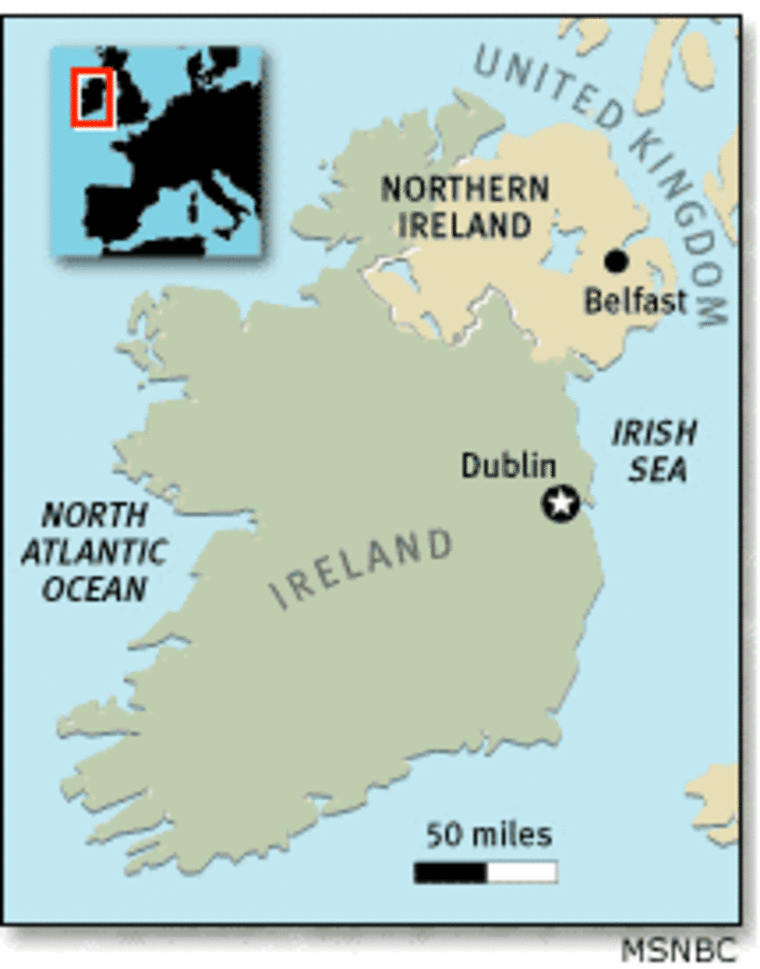Census figures for Northern Ireland, seen as a key determinant of the province’s politics, were released this week. Traditionally split between “pro-British” Protestants and “pro-Irish” Catholics, population counts give a glimpse into the future. The latest data show that the Catholic population is gaining ground, increasing the likelihood of a vote in favor of breaking ties with Great Britain.
Under the 1998 Good Friday agreement, Great Britain agreed to grant Northern Ireland freedom to leave the Union if the majority of inhabitants favored it.
Since Protestants have always been in the majority, it left a slim chance of Irish reunification. But, according to the latest data, the Catholic population — with one of the highest birthrates in Europe — is quickly catching up.
The Northern Ireland Statistics and Research Agency reported the Protestant population has fallen nearly five points from a decade earlier to 53.1 percent, while the Catholic population has grown almost two points to 43.8 percent.
Previous statistics have shown there are more Catholic school-age children than Protestant. Although the influx of Catholic youngsters would not affect a border vote now, it could within 10 to 20 years.
According to Sinn Fein, the demographic changes should lead to a united Ireland. “A United Ireland is the premise of our political existence and we are well on the way to achieving it,” said a spokesman, who asked not to be identified.
He said Sinn Fein’s goal is to have a Catholic majority by 2016 — the 100-year anniversary of the Easter Rising, the rebellion that paved the way for independence for the Republic of Ireland.

Dermot Nesbitt, Environment Minister and Secretary of the Ulster Unionist Party said, “The people in Sinn Fein are jumping up and down about Catholics versus Protestants — but I’m quite relaxed about the whole thing.”
Nesbitt said that the growth of the Catholic population should not have a big effect on politics. “It (allegiance to Britain) is about citizenship and statehood, not religion — I don’t like to see the religion card being played,” he said.
However, despite a façade of confidence, many Protestants worry about becoming the minority in the near future.
“If the number (of Protestants) dropped below 50 percent I’d be concerned— it would be a big worry,” said Grant Cameron, spokesman for the UUP.
Earlier this week, prominent Ulster Unionist Jeffrey Donaldson, who has opposed the Good Friday agreement, argued that constitutional change would need a majority backing by both Catholics and Protestants.
SUPPORT FOR UNITY
Even if the number of Protestants falls below the 50 percent mark, which some experts predicted would be shown by this census, it does not automatically mean that all Catholics would vote to secede from Britain.
Although the proportion of Catholics who support the status quo has fallen over the years, it still remains at approximately 20-25 percent.
It (a Catholic majority) would not necessarily change the make up,” said Steven Alexander, spokesman for the Alliance Party, which is neutral on the issue of staying or splitting with mainland Britain,
“In a border vote you don’t check a box saying Catholic or Protestant — it doesn’t depend on religion.”
Alexander added, “I am sure that there will be an increase in the number of people who do not classify themselves one way or the other — there is an increasing amount of children in integrated schools which are a mixture of religions.”
However, when asked about the politics of the younger generation, he said, “Objectively the parties in the center have fewer younger members than the extreme parties. DUP (Democratic Unionist Party) and Sinn Fein are attracting more younger people at the moment.”
When Northern Ireland was created in 1921, the Protestants — primarily descendents of 17th century British and Scottish settlers who colonized the six northeast counties of Ireland — accounted for two-thirds of the population.
However, now the proportion of Catholics to the entire population of nearly 1.7 million is the highest recorded in the province’s history.
InsertArt(1800832)The Catholic desire for a united Ireland has has been the impetus behind the IRA and more than 3,000 people have been killed in Northern Ireland’s “Troubles” that began in 1969.
Since the 1998 Good Friday agreement which created a power-sharing government and began the decommissioning of arms, there has been a relative calm in the region.
Jennifer Carlile is an intern at MSNBC.com